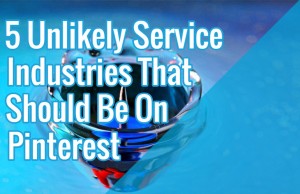
Today’s buyers and browsers have more ways to interact with businesses than ever. From voice search and proximity-based marketing to social media and live chat, it’s never been easier to connect with customers. But this increase in communication channels and platforms doesn’t necessarily translate to a positive customer experience.
According to a study by IBM & Econsultancy, only 22% of consumers say the average retailer understands them as an individual, and only 21% say the communications they receive from the average retailer are “usually relevant”.
How do you really know that you’re actually reaching the right people? How do you feel confident that you’re crafting the best experience?
To understand and develop relevant marketing messages, you have to understand the customer journey – and that requires a map.
What Is Customer Journey Mapping?
Paths that customers take to interact with a specific brand are called customer journeys. Customer journeys allow for brands to create more effective and more satisfying experiences. Successful customer journeys shift focus entirely on the customer’s perspective and approach their paths to making a purchase using empathy.
Customer journeys attempt to capture the many things that happen before, during, and after the experience of your product, service, or marketing channel. Websites, social media pages, blog posts, emails – you name it and it’s all part of the path your customer takes to find and interact with you.
The goal of mapping these activities is to outline all of the steps a customer or a searcher takes when engaging with your company online and offline so that you can:
- Find common trends
- Determine the path of customer’s experience
- Identify strengths, opportunities, weaknesses, and threats
- Improve the service experience for your customers
- Optimize your marketing efforts for greater effectiveness.
Customer journeys can be long, stretching across multiple channels and touchpoints. It’s not uncommon for it to last days or weeks. But at the end of the mapping process, you’ll be able to understand so much more about what makes your business tick and how to make it better.
Why Do Customer Journey Maps Matter?
Have you ever wished you could really get into the heads of your customers? Like, REALLY get into their heads? Customer journey maps do just that by outlining the actual experiences customers have and documenting the touch points with your brand along the way. With these insights, you can get the answers to questions like:
- How are customers feeling? Stressed out? Curious? Excited?
- What are they thinking? Looking to impress friends? Get a raise? Solve an
everyday annoyance? Master a new skill? - What are they looking for? An expert opinion? A how-to? Directions?
- What are their expectations? Valet service? Flexible contract terms? Fast feedback?
Taking time to answer these questions will put yourself into your buyer’s shoes and aid in building empathy towards them: what they want & how they feel. With that knowledge, you can apply it to crafting everything from more engaging marketing campaigns to high converting landing pages.
Aren’t Touch Points Enough?
Maybe you’ve tracked your marketing channels and you’ve got a handle on what your service process is like, but have you looked at the whole picture? Many brands and businesses struggle with customer journey mapping because it challenges them to put all of the pieces together into a cohesive vision that says: “Here are my customers, who they are, what they do, and where my business fits in.”
Customer journey maps are a more sophisticated approach to exploring your marketing funnel and lend more context and color to the observations you currently make about your process. They take you out of your internal mindset of how things should work – and show you what is and isn’t effective in the real world.
For example, let’s say you’re an ecommerce retailer selling widgets. Your customers find you through online search and social media, particularly Instagram. When they purchase from you, you imagine that they search for your products on Google, click on your result, find the product they want, and then add to cart and check out. Sounds pretty straightforward, right?
On a normal day when you want to know what’s happening with your marketing efforts, you may glance at your site analytics or the engagement stats on your last Instagram post. From there, you’ll look at the pages your visitors frequent and things like your cart abandonment rate. But a customer journey map will dig into those stats and round out the picture with details that can get you deeper insights into what your customers want, need, feel, and do.
While in your mind you think the process of finding and shopping on your ecommerce site is simple, it may actually look more like this for the average customer:
1. See a friend tweet about widgets and think, “Hey, I need one too!”
2. Search for widgets on smartphone and see multiple sites appear. Click on the one with the highest star rating.
3. Open another tab and research reviews on widgets.
4. Go eat lunch.
5. Forget about what you researched.
6. Remember a week later and start looking at widgets again – this time on a desktop.
7. Find ecommerce site on page 1 of Google that sells widgets and click on it.
8. Debate whether or not it’s worth spending money on this widget.
9. Decide “Yes!”, but need to check for coupons.
10. Add widget to cart.
11. Open another tab to look for coupons for your ecommerce site. Found one!
12. Go back to ecommerce site and apply the coupon. Score!
13. Check out.
14. Sign up for the ecommerce site’s email list but opt NOT to like them on Facebook. Yet.
15. Fall madly in love with widget and live happily ever after.
Okay, maybe not quite like this, but you get the picture. Suddenly the interaction is much more complicated than you imagined – there are gaps in time, multiple devices, and contextual references around your brand – and each interaction counts! A touch point is much more than a touch – and deserves to be measured as such!
How To Customer Journey Map
The process of drawing out your customer journey maps can be as varied as your marketing channels. Some opt to connect the dots in their customer journeys by matching each touch point up with phases in the marketing or sales funnel. Others document actions in lists or user logs or move post-its around a whiteboard to make their observations.
Feeling lost? Check out some of these common formats for journey mapping. They may simplify the process and make it a bit more organized.
There’s no one set way to accomplish the goal of having a strong map, but here are some phases to keep in mind as you explore the methods that will work best for you:
Step 1: Identify Paths
Start the process of building a map by identifying the paths visitors and customers take to get to you, from their points of view. Think about:
- Parts of the journey – can you group them into episodes or phases?
- Channels – what’s being used to make the journey?
- Repetition – what percent of your customer journeys are repeatable?
- Language – are you describing the journey the same way as your customer?
- Duration – how long is a journey lasting?
If you’re not sure where to begin, survey your customers on where they found you or where they first saw messaging about your brand. Follow from there.
Step 2: Navigate Paths
Next, navigate the paths customers have carved out. Understand their experiences by documenting each step of the journey. What happens? When? How? The key here is to see the actual steps one takes to reach your brand versus your expectations of the steps. What differences are there in expectation versus reality?
Step 3: Observe & Analyze
After traveling in their shoes, it becomes easier to observe and analyze your customer’s needs, expectations, wants, dislikes, desires, annoyances, and preferences during each step of the journey. Make note of what they are, when they occur, and how they affect action. What causes someone to leave? Stay? Convert?
Making these kinds of observations can yield best in class results. 70% of companies that deliver the best service apply customer feedback to improve, as opposed to the industry average of 50% and 29% for those falling behind.
Step 4: Recognize Challenges & Opportunities
When you’ve walked in step with your customers, it’s easier to see the real challenges and opportunities that your brand poses. What works in your approach to lead a customer down the right path? What doesn’t work? Be sure to present these findings to different parts for your organization for consideration. What’s a challenge to one department may be an opportunity for another.
Remember 85% of customer churn is due to preventable poor service. What can you be doing better?
Step 5: Set Priorities
After you’ve listed challenges and opportunities, it’s time to prioritize your focus on what to correct or build. Gaps should be repaired to make the journey smoother, bridges (i.e. what works!) should be strengthened to ensure consistency and quality. In some cases, you may need to break everything down to rebuild it. In others, you may be able to make simple changes to make a big impact.
Step 6: Fix The Roadblocks
It’s frustrating but necessary. The elements that pop up in the journey that need fixing may not be quick corrections. It may take time, effort, or even scrapping an entire strategy to get it right – but it’s worth it. Higher customer satisfaction through better experiences can lead to higher revenue growth and companies that perform well in journeys have stronger competitive advantages.
Step 7: Building A Framework To Sustain
Finally, build a system to continuously monitor and evaluate customer journeys over time. With new technology, new touch points, and shifts in behavior, you’ll be challenged to update your perceptions and observations. Make mapping a sustainable part of your organization by committing to doing it regularly and empowering all departments or team members to contribute. Never stop asking the questions you explore as part of the mapping process.
Companies that embrace journey mapping and management as a sustainable part of their business strategy can, according to Aberdeen Group research, enjoy benefits like greater marketing ROI, revenue growth from customer referrals, smoother sales cycles, and improved cross-sell or upsell opportunities. Other research supports that the majority of consumers are willing to pay more for a guaranteed good experience.
Making Customer Journey Maps Work For You
When you’ve mapped the paths your customers take from finding you to becoming your advocate, you can apply what you learn to how you communicate with and create better experiences for your customers. Everything from the color choices on your website to the language you use on social media factors into their impressions of who you are and what you have to offer.
Online, customer journey maps can represent smarter pathways to conversion, more tailored approaches to content creation, and optimized keyword lists as you’ll know the true context around how people find and interact with you in digital channels. Offline, customer journey maps can mean improvements in customer service, service or order fulfillment, or events.
For example, let’s go back to the ecommerce site we talked about earlier.
Say you’ve mapped a few common customer journeys to your ecommerce site and have found that people usually check reviews of widgets before purchasing them. You know that users tend to research before they impulse buy, so to reassure them, you add reviews right on the product page and make video testimonials part of your online content strategy.
Also in your journey mapping process, you found out that people tend to have events around widgets where they can get together with other widget owners and talk about how they use them, where they found them, etc. That prompted you to host offline events at widget conventions and to start up community street team to spread the word about your widgets at local widget gatherings.
From there, you can generate more offline (and online!) buzz about your widgets and connect more closely with your customers while sourcing the journey mapping insights you need to keep the process going!
The observations you’ll make the mapping process can be insightful and can drive action. They can also reaffirm that you’re already doing the right things. But you won’t know either way – and can’t apply the insights – without trying!
How do you listen to your customers and map their experiences? What was something you learned in the process? How did you apply it?
* Adapted lead image: Public Domain, pixabay.com via getstencil.com
The post Use Customer Journey Maps To Craft Better Experiences appeared first on Search Engine People Blog.
(47)
Report Post




